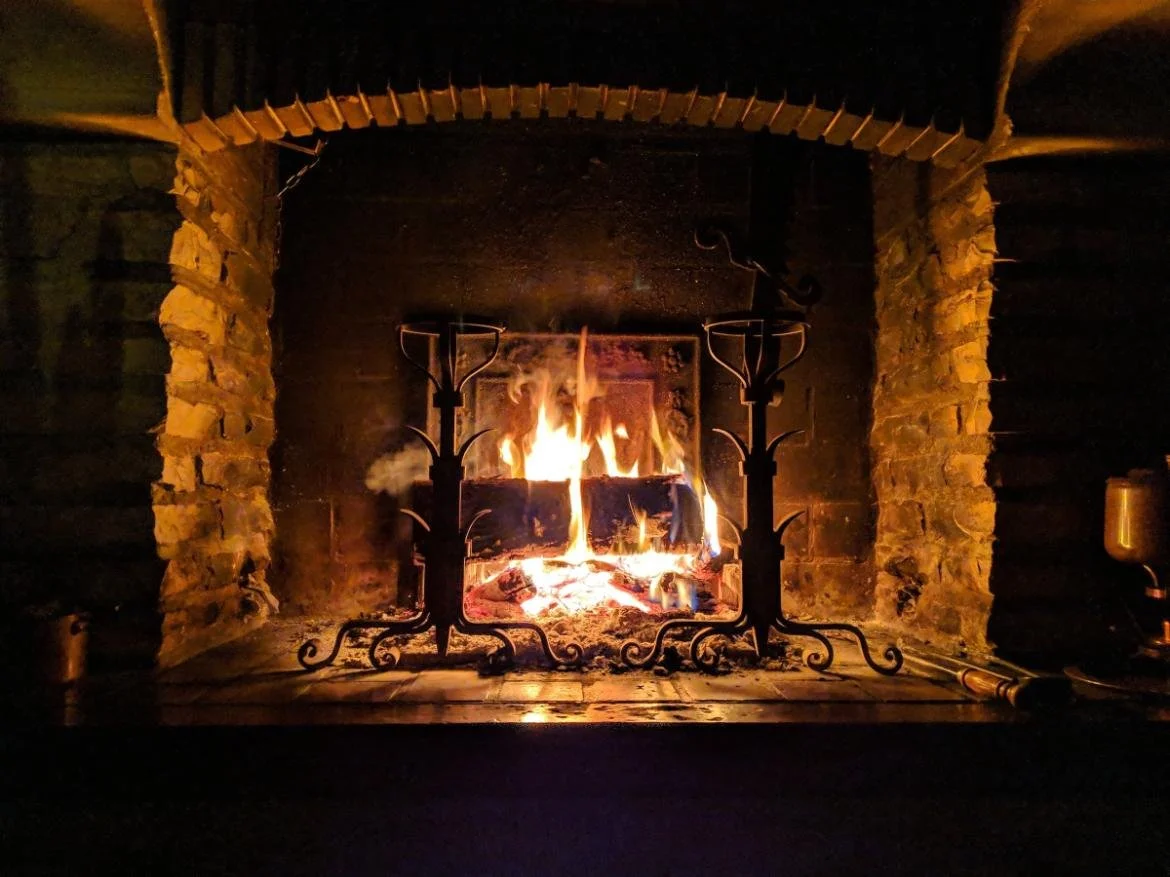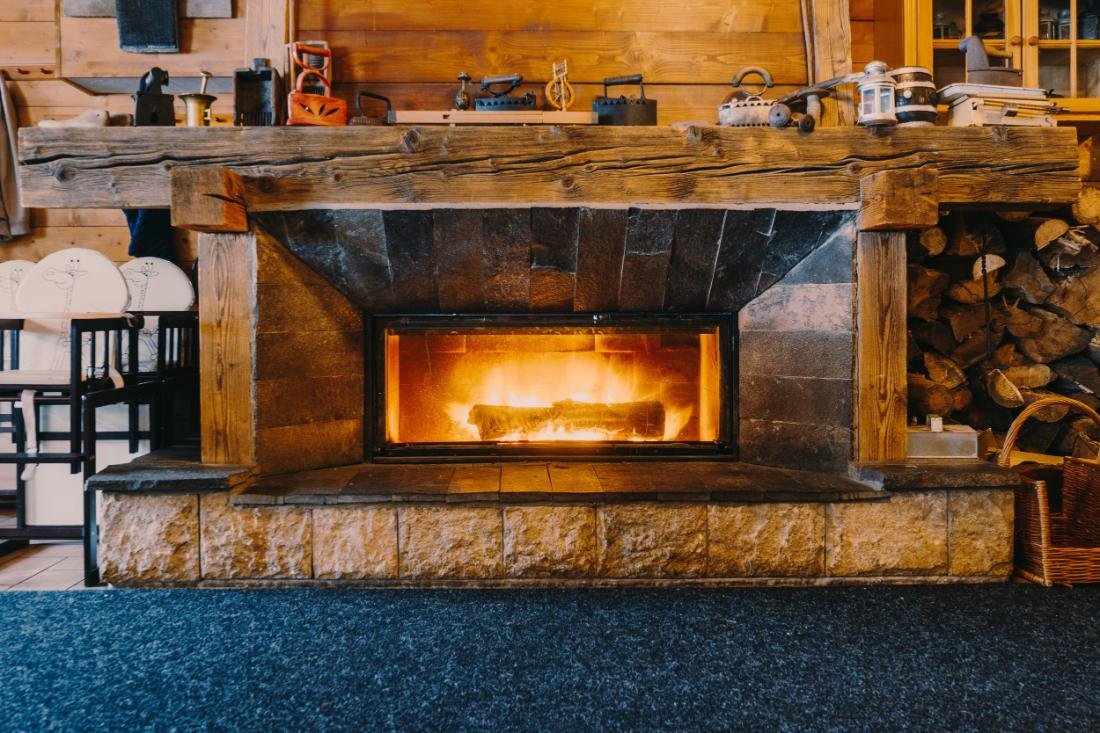Gas Log Fireplaces for Sustainable Heating
Picture yourself on a cold winter's night, cozying up to a warm, inviting fireplace. Imagine doing so guilt-free, knowing your heating choice is eco-friendly and energy-efficient. Eco-friendly gas log fires deliver an authentic experience, combining the allure and coziness of traditional fireplaces while minimizing your home’s environmental impact.
In this blog post, we'll explore the benefits of gas log fires, compare them with other heating systems, and offer tips on choosing the perfect fireplace for your home.
Key Takeaways:
Regarding energy efficiency: Gas log fires offer several advantages compared to other heating methods
Regarding emissions: Gas log fires have a clear edge over traditional wood-burning fireplaces, making them an environmentally friendly option for heating your home
Regarding Minimal Waste: Gas log fires generate minimal waste compared to wood-burning fireplaces
The Advantages of Gas Log Fires for Eco-Friendly Heating
As we strive to reduce our carbon footprint and adopt eco-friendly practices, gas log fireplaces have emerged as an attractive alternative to traditional wood-burning fireplaces. They offer numerous benefits, such as energy efficiency, lower emissions, and minimal waste, making them an environmentally friendly option in modern living spaces.
ENERGY EFFICIENCY
Regarding energy efficiency, gas log fires offer several advantages compared to other heating methods:
They are more energy-efficient, consume less fuel, and save on energy costs in the long run.
They have higher heating capacities, providing more warmth and comfort.
The design of these fireplaces, featuring convector fires, heat exchangers, and blowers or fans, ensures that heat is dispersed evenly and efficiently throughout the room.
Using gas log fires, you enjoy a warm and cozy atmosphere, minimize energy consumption, and contribute to a cleaner environment.
Gas log fires are also compatible with renewable energy sources like solar power, enhancing their eco-friendly credentials. Opting for a gas log fireplace indicates your active decision to lessen your home's carbon footprint and adopt sustainable heating.
LOWER EMISSIONS
Regarding emissions, gas log fires have a clear edge over traditional wood-burning fireplaces, making them an environmentally friendly option for heating your home. However, it’s important to remember that gas log fires burn natural gas and may still release carbon dioxide, methane, and potentially carbon monoxide without proper ventilation. By following safety precautions and ensuring adequate ventilation, you can minimize the potential risks of harmful emissions while enjoying the benefits of a cleaner and greener heating source.
MINIMAL WASTE
Gas log fires generate minimal waste compared to wood-burning fireplaces. The absence of ash eliminates the need for ash disposal, reducing air pollution that’s commonly caused by burning wood. Additionally, there is no need for wood storage, cutting down on space requirements and waste management.
Opting for a gas log fireplace offers several benefits, including:
It lessens your environmental impact
Provides a cleaner and more efficient heating solution
No more dealing with the mess of ashes or the constant need for firewood
It offers a simple, eco-friendly heating option that keeps your home warm and inviting.
Comparing Gas Log Fires to Other Heating Options
Gas log fires stand out among other heating options for their energy efficiency and eco-friendliness. Let's examine how they stack against electric heaters, wood stoves, and pellet stoves.
ELECTRIC HEATERS
While electric heaters can be eco-friendly, they often consume more power and produce higher greenhouse gas emissions than gas log fires. Moreover, electric fireplaces can be less energy-efficient than gas heaters and heat pumps. Although electric heaters are a cleaner option, their environmental impact may be higher than gas log fires.
WOOD STOVES
Though capable of providing a charming and rustic atmosphere, wood stoves have environmental drawbacks. Burning wood releases airborne particles and methane, negatively affecting air quality. In contrast, gas log fires produce fewer emissions and have a lower environmental impact than traditional ones, making them a more sustainable choice for heating your home.
PELLET STOVES
Pellet stoves, which use compressed wood or biomass pellets as fuel, are considered eco-friendly and produce minimal air pollution. However, they still require a fuel source and may not be as energy-efficient as gas log fires. While pellet stoves are a greener alternative to wood stoves, gas log fires offer a cleaner and more efficient heating solution.
Different Types of Gas Log Fireplaces
Considering the different available types is crucial when choosing a gas log fireplace. These include vented, vent-free, and direct-vent gas logs, each with unique features and benefits.
VENTED GAS LOGS
Vented gas logs require a chimney or venting system to release combustion byproducts, ensuring the safe operation of the fireplace. They mimic the appearance of a traditional wood-burning fireplace while offering the convenience and efficiency of gas heating. To properly install vented gas logs, you may need to install a venting system horizontally or through the roof, depending on your home's layout and existing chimney.
VENT-FREE GAS LOGS
Vent-free gas logs do not require a chimney or venting system. They burn gas more efficiently than vented gas logs, drawing in air from the room for combustion and releasing the emissions back into the room. It means all the heat produced stays inside, providing a more energy-efficient heating option.
However, securing proper ventilation in the room is necessary to avoid the buildup of carbon monoxide and other potentially harmful gases.
DIRECT VENT GAS LOGS
Sealed combustion units vent directly outside, ensuring optimal indoor air quality, with direct-vent gas logs. They bring in fresh air from the outside and exhaust combustion gases outside the structure through a vent. You can direct the vent horizontally, vertically, or in both directions. Direct-vent gas logs provide a safe and efficient heating option, making them ideal for homeowners seeking to balance comfort and environmental responsibility.
Choosing the Right Gas Log Fireplace for Your Home
Size, design preferences, and fuel type— are several things you should consider when selecting the perfect gas log fireplace for your home. These factors can guide you in making a knowledgeable choice of a fireplace that fulfills your heating needs and enhances your home's style and decor.
SIZE CONSIDERATIONS
Choosing the appropriate size gas log fireplace for your space is crucial for efficient heating. The heating capacity of a gas log fire is typically around 34 megajoules per hour, which can warm up to 100 square meters. To ensure that you select the right size for your home, consider factors such as the size, the number of stories, and the insulation quality. Choosing a fireplace with a suitable heating capacity allows you to experience efficient heating while saving energy.
DESIGN PREFERENCES
Regarding design preferences, gas log fireplaces offer many options to suit your tastes and reflect the personality of your home’s interior. From traditional wood fireplaces to contemporary styles, you can customize your gas fireplace by selecting materials, colors, and placement that meet your design preferences. Gas fireplaces, especially gas log models, perfectly balance aesthetics and functionality. By choosing a design that complements your home's existing decor, you can create a focal point in your living space that is both functional and aesthetically pleasing.
FUEL TYPE
Either natural gas or propane can fuel gas log fireplaces. While both fuel types have advantages, it's essential to consider factors such as availability, cost, and environmental impact when deciding.
Propane, for example, has a higher heating efficiency and produces more heat per cubic foot but may be more expensive than natural gas. Evaluating the available fuel options can guide you in making a knowledgeable selection of the best fuel type for your needs.
Installation and Maintenance of Gas Log Fireplaces
Proper installation and maintenance are essential aspects of owning a gas log fireplace. Ensuring correct installation and regular fireplace maintenance allows you to reap the benefits of efficient heating while mitigating potential risks and hazards.
PROFESSIONAL INSTALLATION
Hiring a professional to install your gas log fireplace is crucial for safety and proper installation. A professional installer has the expertise and knowledge to ensure your fireplace is installed by safety codes and standards, reducing the risk of future issues and repairs that could arise from improper installation. Choosing professional installation can give you peace of mind, knowing that experts have installed your fireplace correctly and safely.
ROUTINE MAINTENANCE
Scheduling routine maintenance is vital to keeping your gas log fireplace functioning efficiently and safely. It's essential to clean and inspect your fireplace regularly, remove gas logs for cleaning, and keep the mantel and surrounding area clean to avoid dirt and debris buildup. Experts recommend servicing your fireplace at least once a year or every six months if used frequently to ensure optimal performance and safety.
SAFETY PRECAUTIONS
It’s necessary to adhere to safety precautions when operating a gas log fireplace. Here are some essential steps you should always follow to ensure the safe operation of a gas log fireplace in your home:
Keep flammable materials away from the fireplace.
Install a carbon monoxide detector near the fireplace.
Adhere to the manufacturer's guidelines for usage and maintenance.
Adopting these safety measures allows you to bask in the warmth and ambiance of your gas log fireplace while reducing potential hazards.
Enhance Energy Efficiency with Gas Log Fires
To enhance the energy efficiency of your gas log fireplace, consider additional measures like improving your home's insulation, adjusting thermostat settings, and adopting sustainable practices. These enhancements can be achieved with the help of professionals and experts.
INSULATION
Improving insulation in your home can significantly reduce heat loss and increase the efficiency of your gas log fireplace. Ensuring proper insulation around the fireplace, hearth, and walls can help retain heat and reduce energy consumption. Additionally, unfaced fiberglass insulation in your home can enhance energy efficiency and provide a more comfortable and eco-friendly living environment.
THERMOSTAT SETTINGS
Adjusting your thermostat settings can also contribute to energy conservation and maintaining a comfortable temperature in your home. Keeping the thermostat between 17°C and 20°C is recommended for optimal energy efficiency. A programmable thermostat can help provide better control and energy savings, allowing you to customize your heating preferences and reduce energy consumption.
SUSTAINABLE PRACTICES
Incorporating sustainable practices can reinforce your eco-friendly gas log fireplace and further diminish your environmental impact. Consider using energy-efficient appliances, sealing drafts to prevent heat loss, and using renewable natural gas to fuel your fireplace. These practices can help reduce greenhouse gas emissions and support a cleaner lifestyle.
Embrace Sustainable Warmth in Your Home
Installing a gas log fireplace offers an eco-friendly and energy-efficient alternative to traditional wood-burning fireplaces. Their benefits include lower emissions, minimal waste, and improved energy efficiency, making them an ideal choice for environmentally conscious homeowners. By considering factors such as size, design preferences, and fuel type when selecting a gas log fireplace, you can enjoy the warmth and ambiance of a fireplace while minimizing your environmental impact.
If you’re looking for ways to embrace sustainable warmth and transform your living space, a gas log fireplace could be what your home needs.









